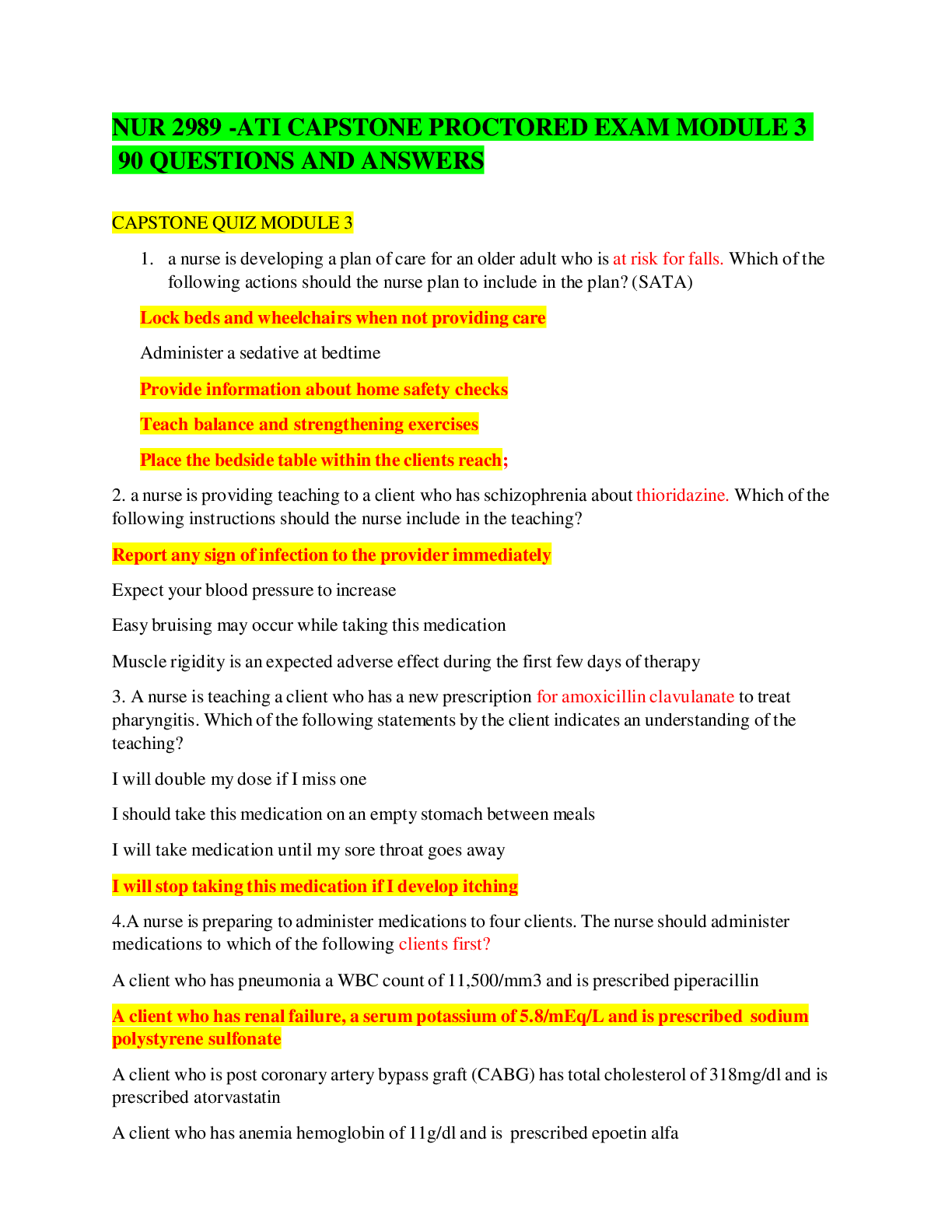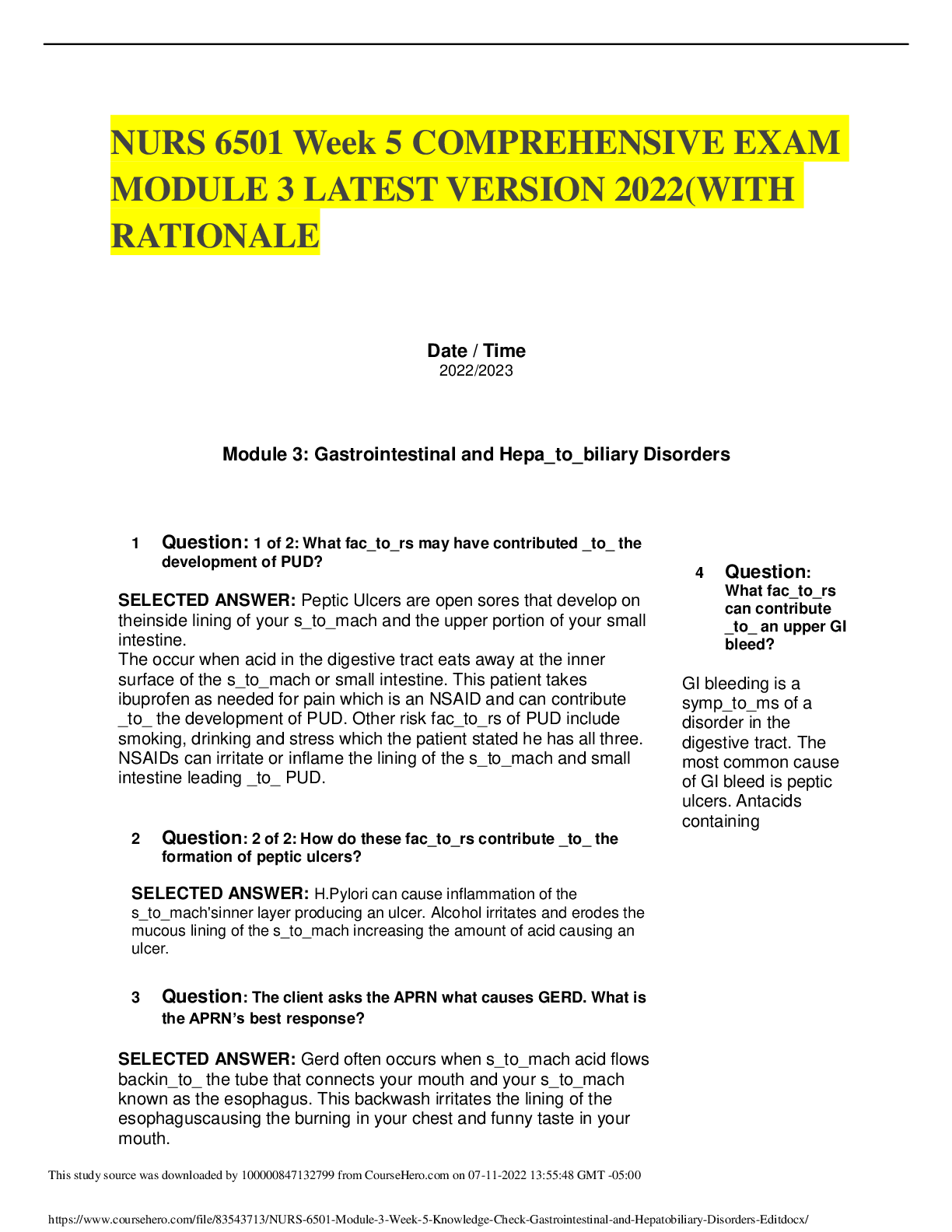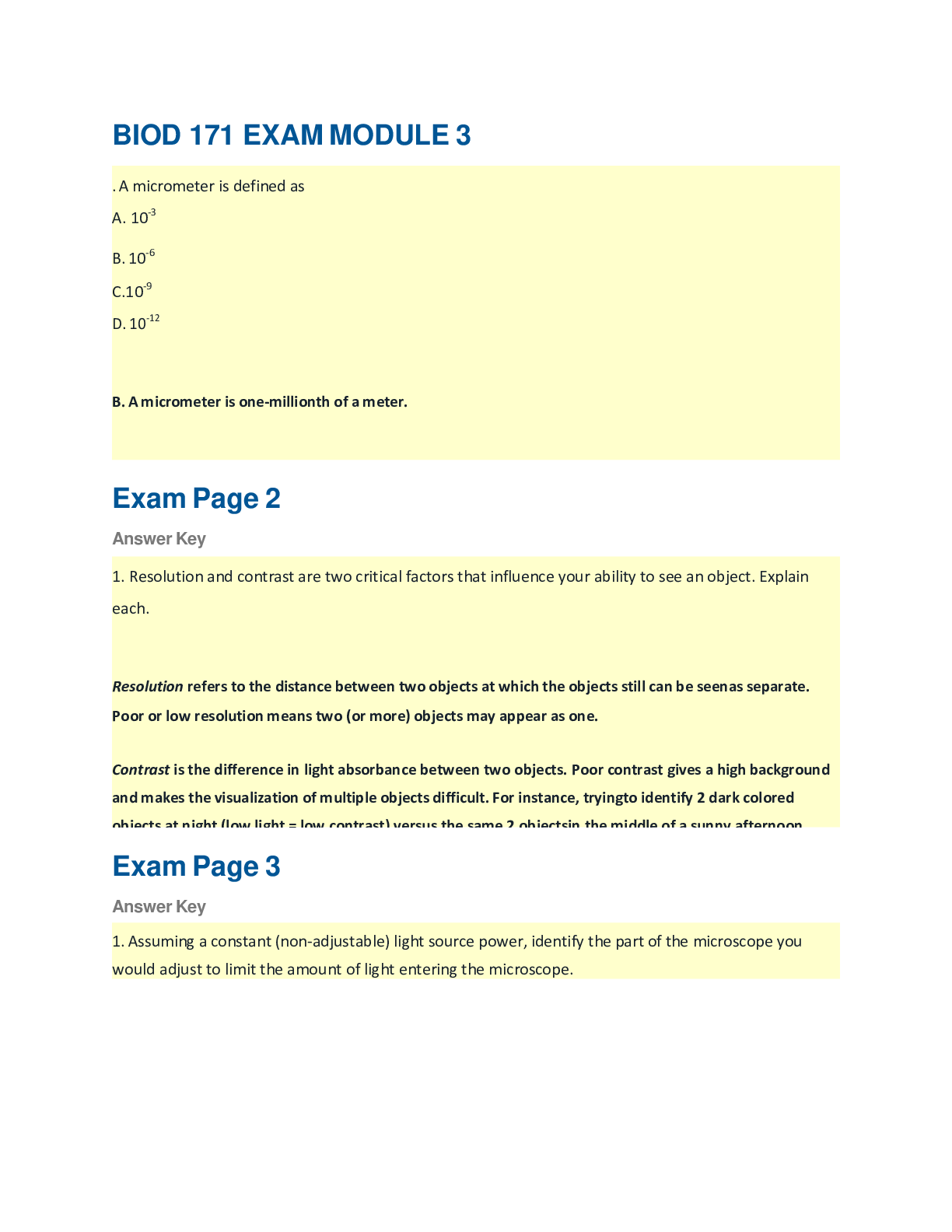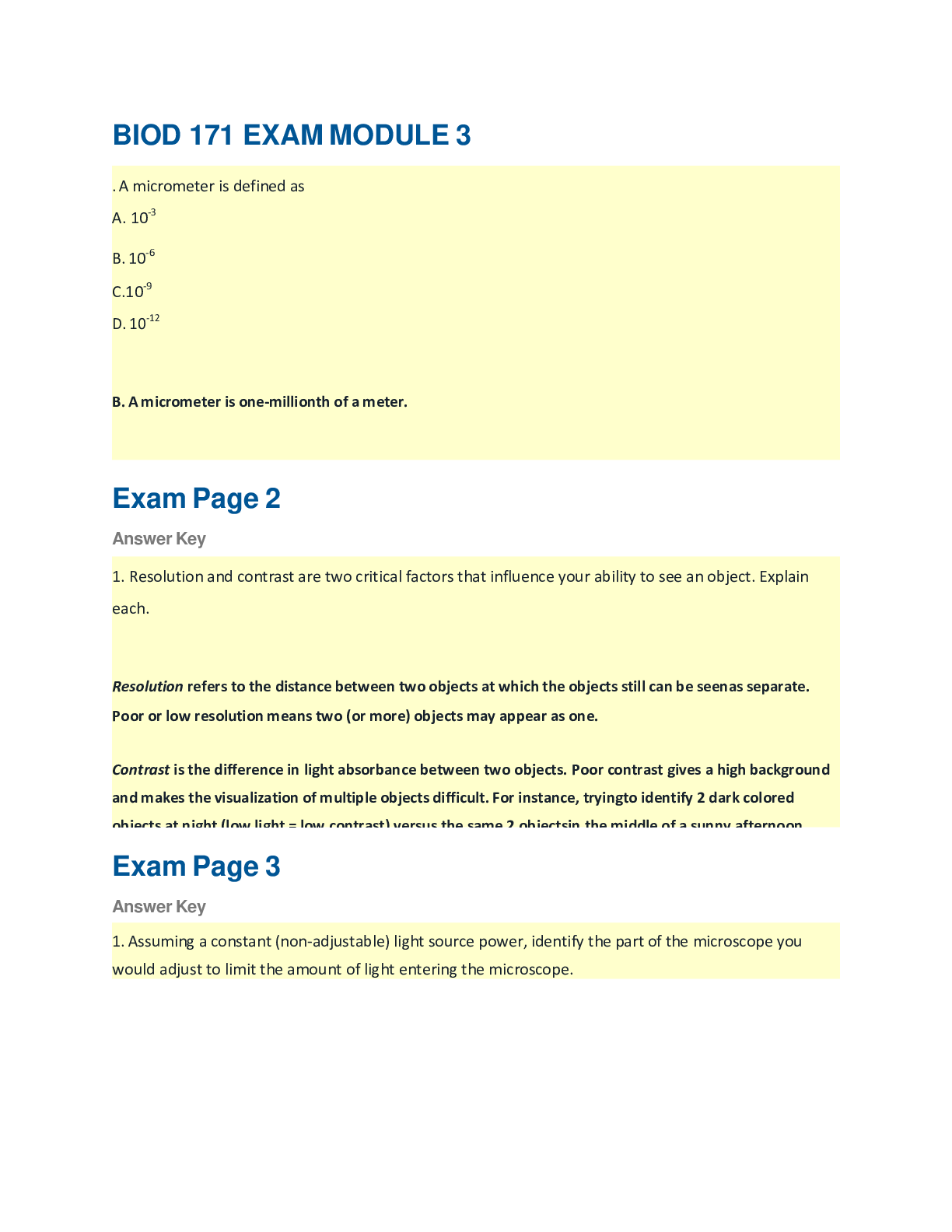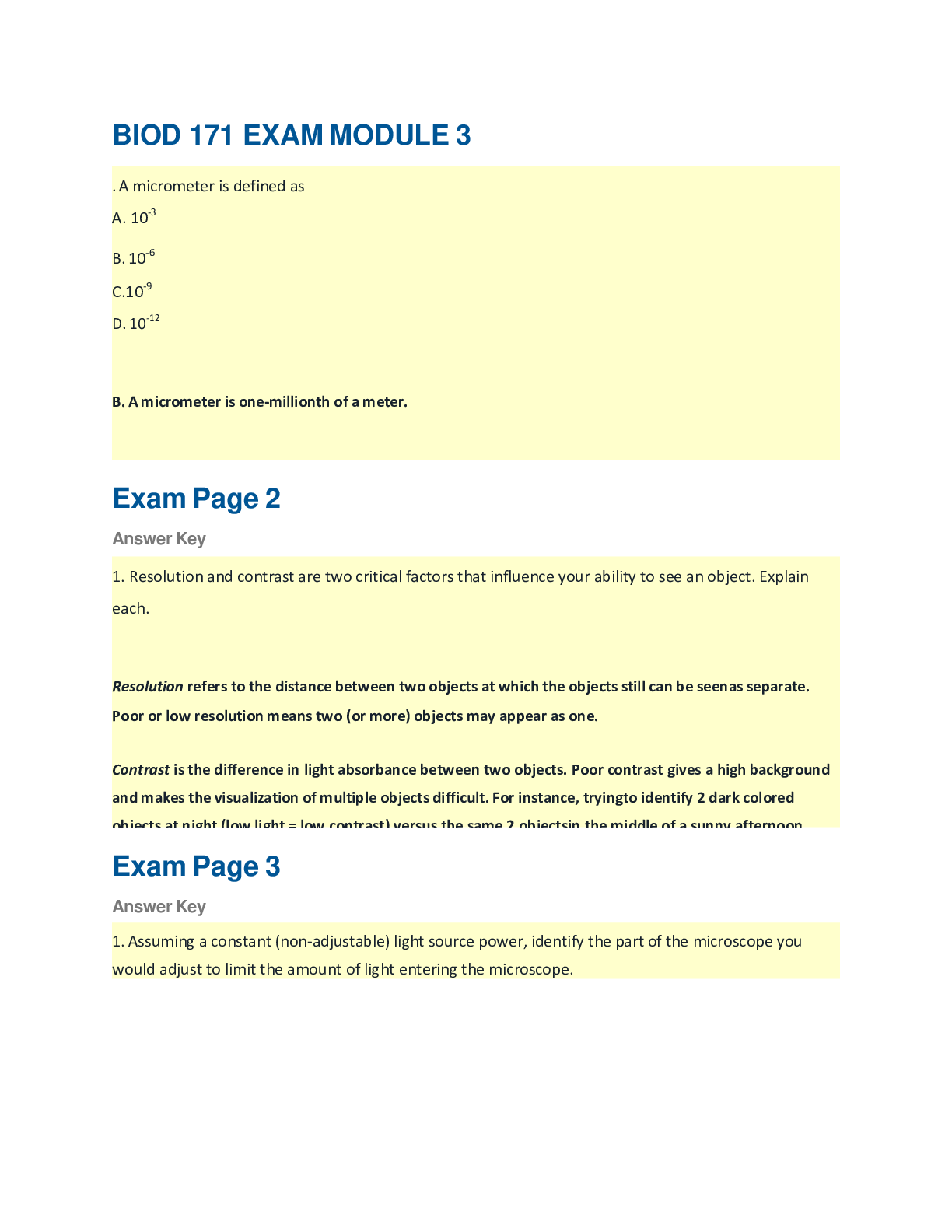HESI EXIT EXAM MODULE 3 WITH RATIONALE
Document Content and Description Below
HESI EXIT EXAM MODULE 3 WITH RATIONALE.Questions 1. ID: 8482587678 The mother of a 3-year-old child tells the nurse that her child hit her doll after the mother scolded her for picking the nei... ghbors’ flowers. Which defense mechanism used by the child does the nurse identify in the mother’s report? A Projection B Sublimation C Displacement Correct D Identification Rationale: The defense mechanism of displacement involves the discharge of intense feelings for one person onto a substitute person or object that is less threatening to satisfy an impulse. Projection involves attributing an attitude, behavior, or impulse, such as that which occurs in blaming or scapegoating, to someone else. Sublimation is the act of rechanneling an impulse into a more socially acceptable object. Identification involves modeling behavior after someone else's. Test-Taking Strategy: Note the subject of the question, defense mechanisms. Focusing on the data in the question and the child’s behavior will direct you to the correct option. Review: these defense mechanisms . Reference: Varcarolis, E., & Halter, M. (2009). Essentials of psychiatric mental health nursing: A communication approach to evidence-based care (p. 133). St. Louis: Saunders. Cognitive Ability: Understanding Client Needs: Psychosocial Integrity Integrated Process: Nursing Process/Assessment Content Area: Mental Health Giddens Concepts: Development, Mood and Affect HESI Concepts: Developmental, Mood and Affect Awarded 1.0 points out of 1.0 possible points. 2. ID: 8482589936 A client says to the nurse, “I’ve been following my diet and taking my medication. What else do you want to talk about today?” Which response would be most helpful during the working phase of the therapeutic alliance? A “Sounds fine to me. Let’s meet again in 6 months.” B “I don’t believe that you have been following your diet, because you haven’t lost any weight.” C “Well, you’ve talked about diet in your terms, but perhaps I should test you on specific things.” D “Some people have added exercise to diet and medication therapy and gotten positive results. Do you think that this would work for you?” Correct Rationale: Although suggestion or overt giving of advice is sometimes nontherapeutic, these strategies are therapeutic when used in the working phase, because in this situation they will increase the client’s perception of all available options in the treatment plan. Answering, “Sounds fine to me. Let’s meet again in 6 months” stops the communication process. Stating to the client that he or she has not lost any weight implies disbelief and does not explore the reasons for the client’s failure to lose weight. “Testing” challenges the client and is nontherapeutic. Test-Taking Strategy: Note the strategic word “most” and remember therapeutic communication techniques. Noting the words “working phase” in the question will direct you to the correct option. Review: therapeutic communication techniques . Reference: Stuart, G. (2009). Principles & practice of psychiatric nursing (9th ed., pp. 27-31, 553). St. Louis: Mosby. Cognitive Ability: Applying Client Needs: Psychosocial Integrity Integrated Process: Communication and Documentation Content Area: Mental Health Giddens Concepts: Communication, Health Promotion HESI Concepts: Communication, Health, Wellness, and Illness—Health Promotion Awarded 1.0 points out of 1.0 possible points. 3. ID: 8482589970 As the nurse prepares to interview a client being admitted to the mental health unit, the client says, “I asked my family to bring me in here to talk to someone, but now I don’t know where to begin.” Which response by the nurse would be most helpful? A “Why not just start talking and see where it takes you?” B “If I were you, I’d begin with what you were doing this morning.” C “Perhaps you can start by sharing some of your most recent concerns.” Correct D “Don’t worry. Everyone who comes in here for the first time feels reluctant to talk.” Rationale: The intake interview is usually the first contact with the client. It is intended to establish rapport, to help the nurse understand the client’s current problem and level of functioning, and to help the nurse formulate a nursing care plan. The clinician usually allows the client to set the pace of the interview and uses open-ended questions to elicit a comprehensive diagnostic picture of the client’s problems and level of coping. Sharing concerns is a good place to start the conversation, because [Show More]
Last updated: 2 years ago
Preview 1 out of 30 pages

Buy this document to get the full access instantly
Instant Download Access after purchase
Buy NowInstant download
We Accept:

Also available in bundle (1)

COMPLETE HESI EXIT EXAM MODULES/EXAMS STUDY PACKAGE. ALL WITH RATIONALE. TOP RATED. DOWNLOAD TO SCORE A
COMPLETE HESI EXIT EXAM MODULES/EXAMS STUDY PACKAGE. ALL WITH RATIONALE. TOP RATED. DOWNLOAD TO SCORE A
By Quality Suppliers 4 years ago
$150
15
Reviews( 0 )
$21.00
Can't find what you want? Try our AI powered Search
Document information
Connected school, study & course
About the document
Uploaded On
Feb 08, 2021
Number of pages
30
Written in
Additional information
This document has been written for:
Uploaded
Feb 08, 2021
Downloads
0
Views
249



.png)

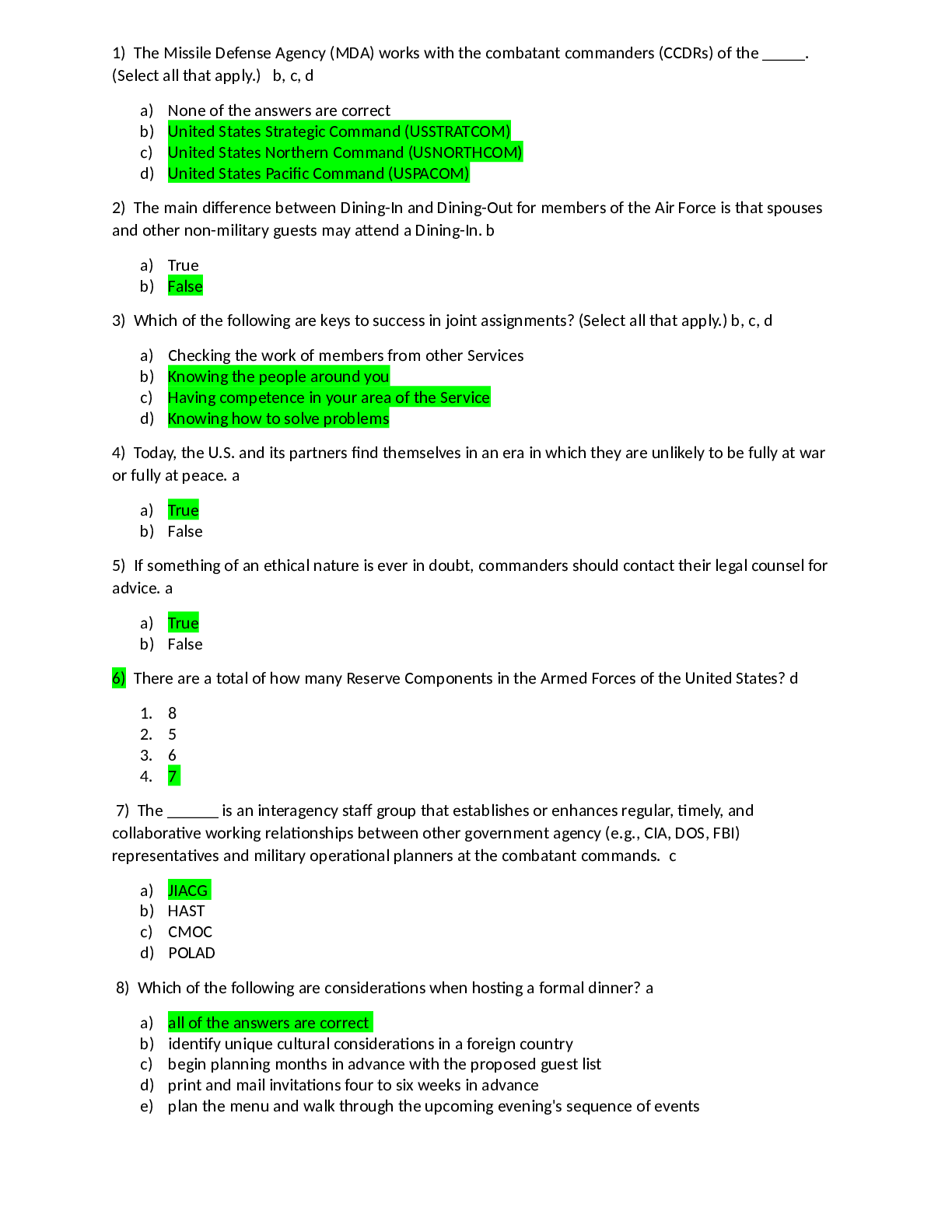
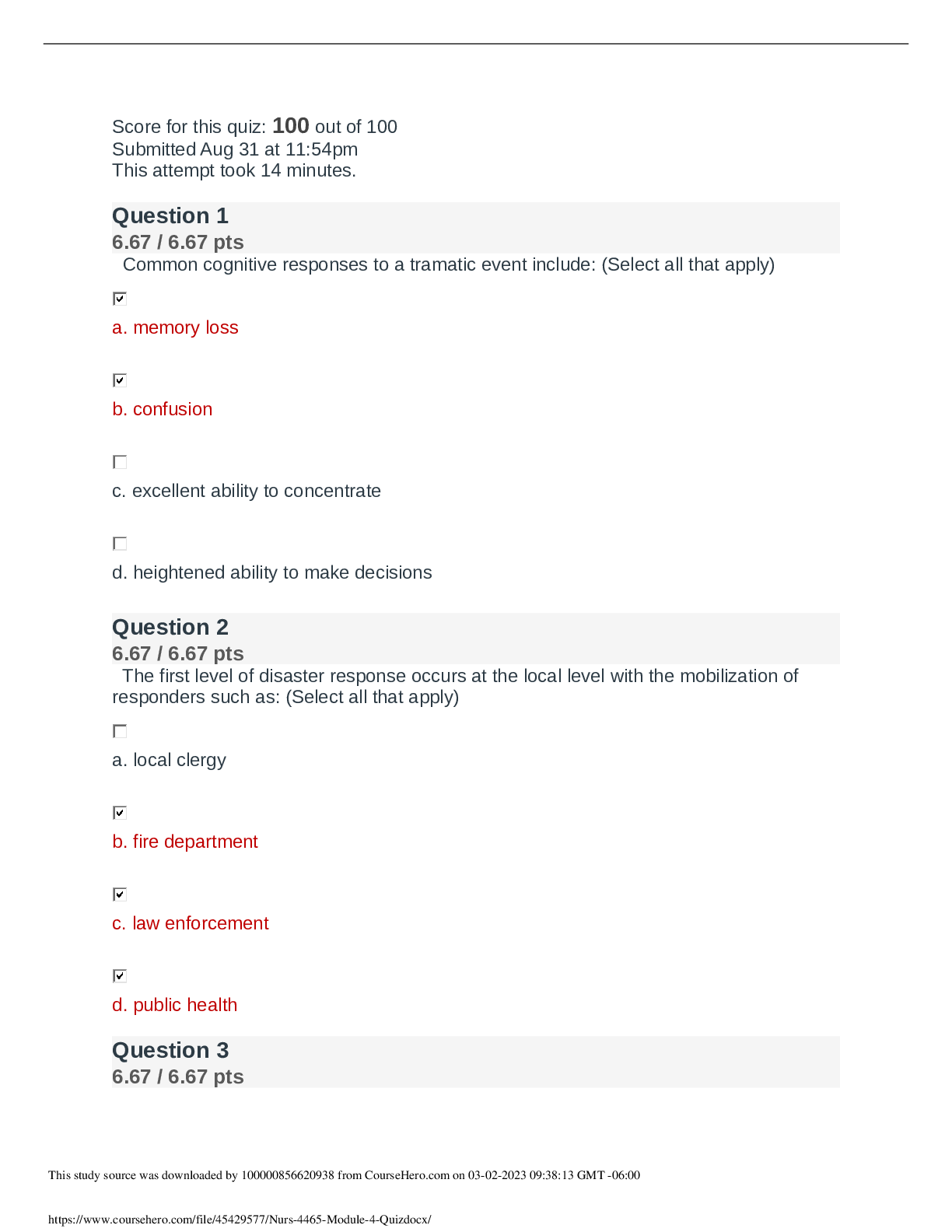
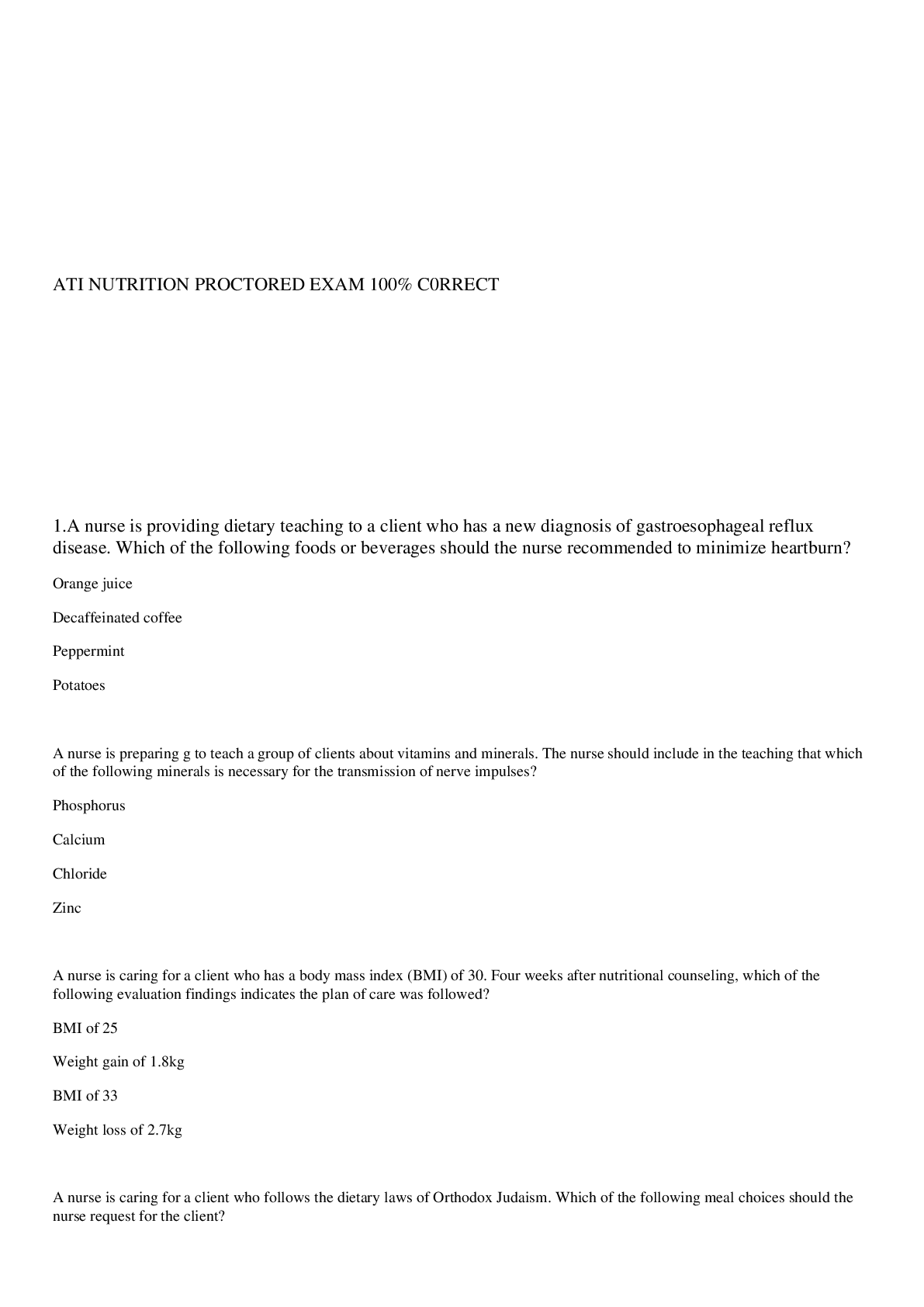
.png)
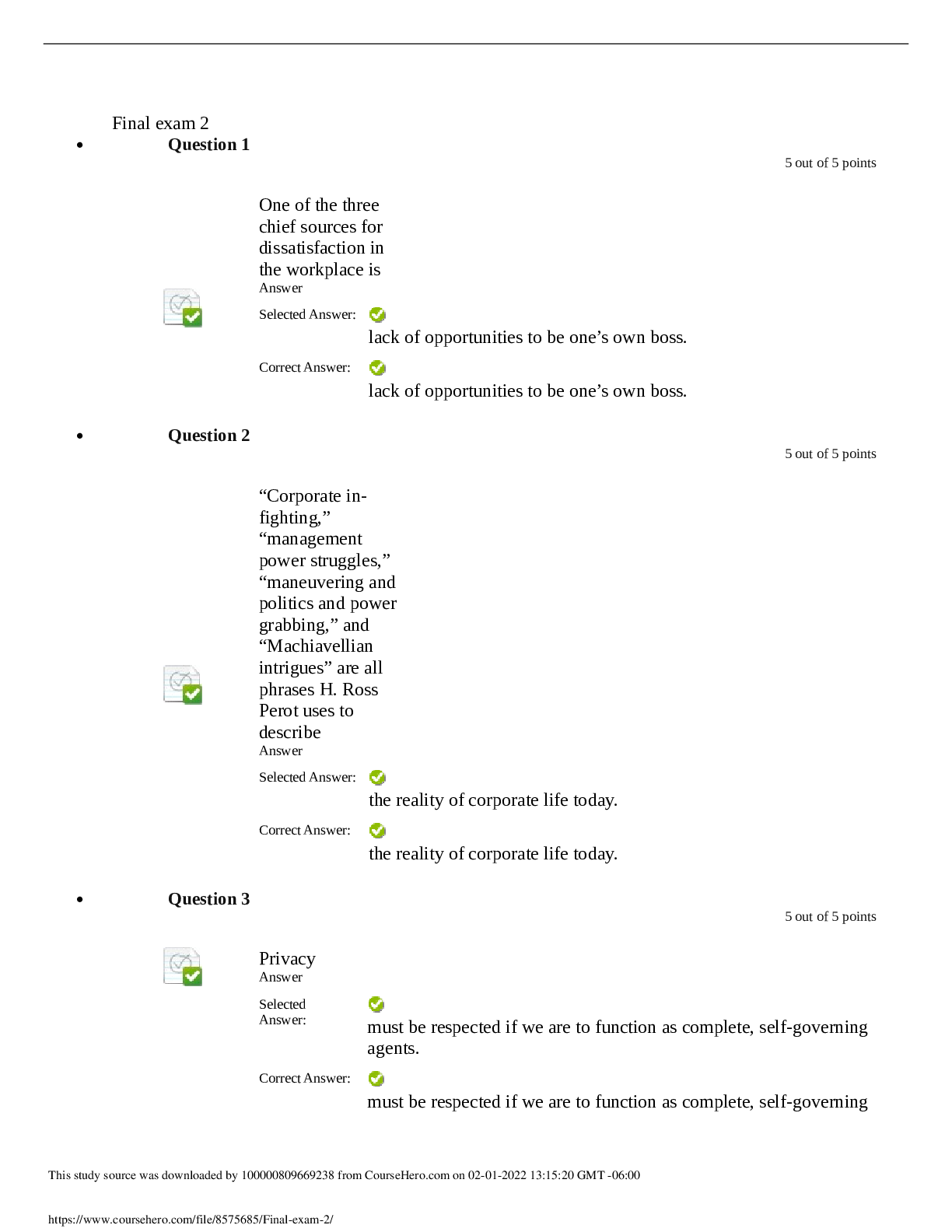
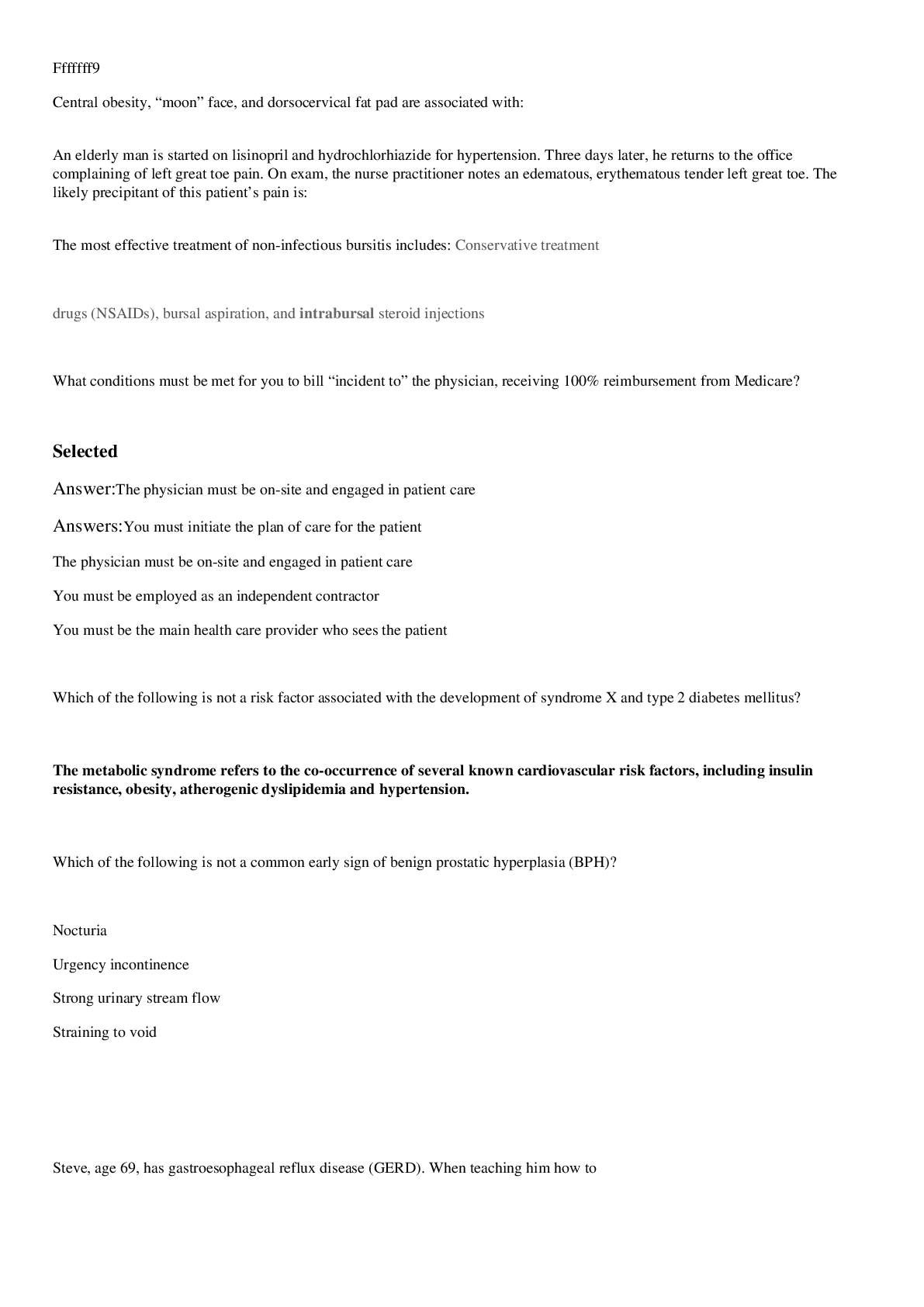
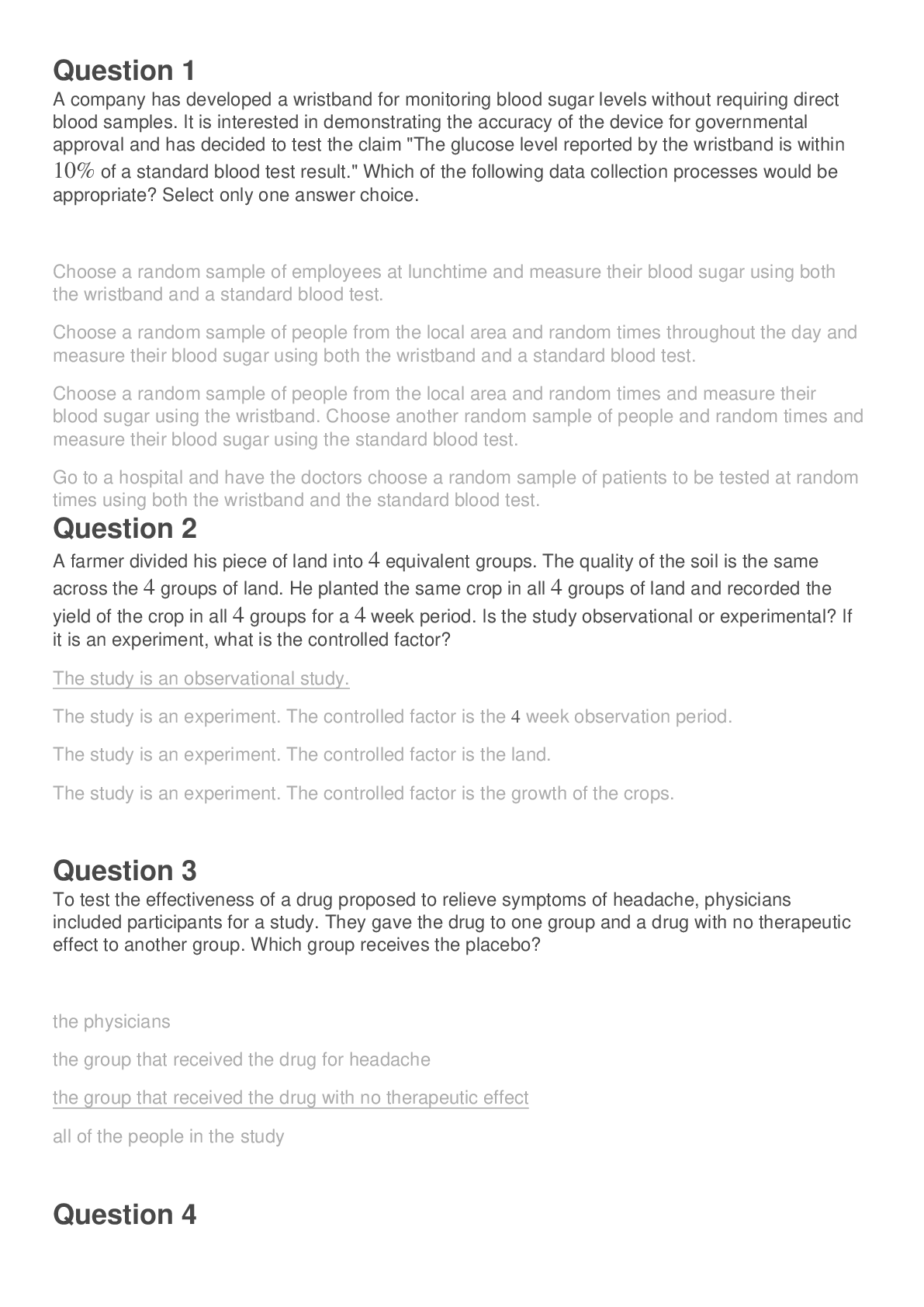
.png)



.png)

